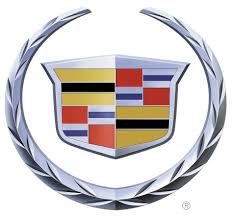Catera V6-3.0L VIN R (1997)

Brake Bleeding: Service and Repair
^
Tool Required
-
J 21472 Brake Bleeder Wrench
1. Apply the brakes several times with the engine off to remove the vacuum reserve.
2. Use brake fluid to fill the master cylinder reservoir. Ensure to keep the master cylinder reservoir at least half full during the bleeding operation.
3. Perform the following steps if the master cylinder is known or suspected to have air in the bore:
a. Disconnect the front Electronic Brake Traction Control Module (EBTCM) pipe fitting at the master cylinder.
b. Allow the fluid to fill the master cylinder body bore until it begins to flow from the front EBTCM pipe fitting port.
c. Connect the front EBTCM pipe to the master cylinder.
d. Tighten the EBTCM pipe to the master cylinder.
e. Have a helper depress the brake pedal slowly one time and hold.
f.
Loosen the front EBTCM pipe fitting at the master cylinder body to purge the air from the bore.
g. Tighten the fitting.
h. Have the helper slowly release the brake pedal.
i.
Wait 15 seconds.
j.
Repeat above sequence, including the 15 second wait, until all the air removes from the brake master cylinder body bore. Ensure to prevent
fluid from contacting any painted surface.
Notice: Refer to Fastener Notice in Service Precautions.
-
Tighten the brake master cylinder pipe fitting to 16 Nm (12 ft. lbs.).
k. Repeat the procedure outlined above to bleed the master cylinder at the rear EBTCM fitting After all the air is removed at the front EBTCM
pipe fitting.
-
Tighten the brake master cylinder pipe fitting to 16 Nm (12 ft. lbs.).
4. Bleed the individual front and/or rear brake calipers only After all the air is removed from the brake master cylinder.
5. Follow this sequence if it is necessary to bleed all of the front and rear wheel brake calipers:
a. Right rear.
b. Left. rear.
c. Right front.
d. Left. front.
6. Raise and suitably support the vehicle.
7. Place a proper size box end wrench over the bleeder valve.
8. Attach a clear tube over the front or the rear brake caliper bleeder valve.
9. Allow the tube to hang submerged in a clear container partially filled with brake fluid.
10. Have a helper depress the brake pedal slowly one time and hold.
11. Loosen the bleeder valve to purge the air from the front or the rear caliper.
12. Tighten the front or the rear caliper bleeder valve.
13. Have the helper slowly release the brake pedal.
14. Wait 15 seconds.
15. Repeat the sequence, including the 15 second wait, until all the air removes. It may be necessary to repeat the sequence ten or more times to
remove all the air.
-
Tighten the front or the rear brake caliper bleeder valve to 9 Nm (80 inch lbs.).
16. Note that rapid pumping of the brake pedal pushes the master cylinder secondary piston down the master cylinder body bore. This makes it
difficult to bleed the rear side of the system.
17. Lower the vehicle.
18. Fill the master cylinder reservoir to the proper level. Refer to Master Cylinder.
19. Inspect for the following conditions: Check the brake pedal for sponginess. Check the red BRAKE indicator lamp for indication of unbalanced
pressure.
20. Repeat the entire bleeding procedure to correct either of the two above conditions.
